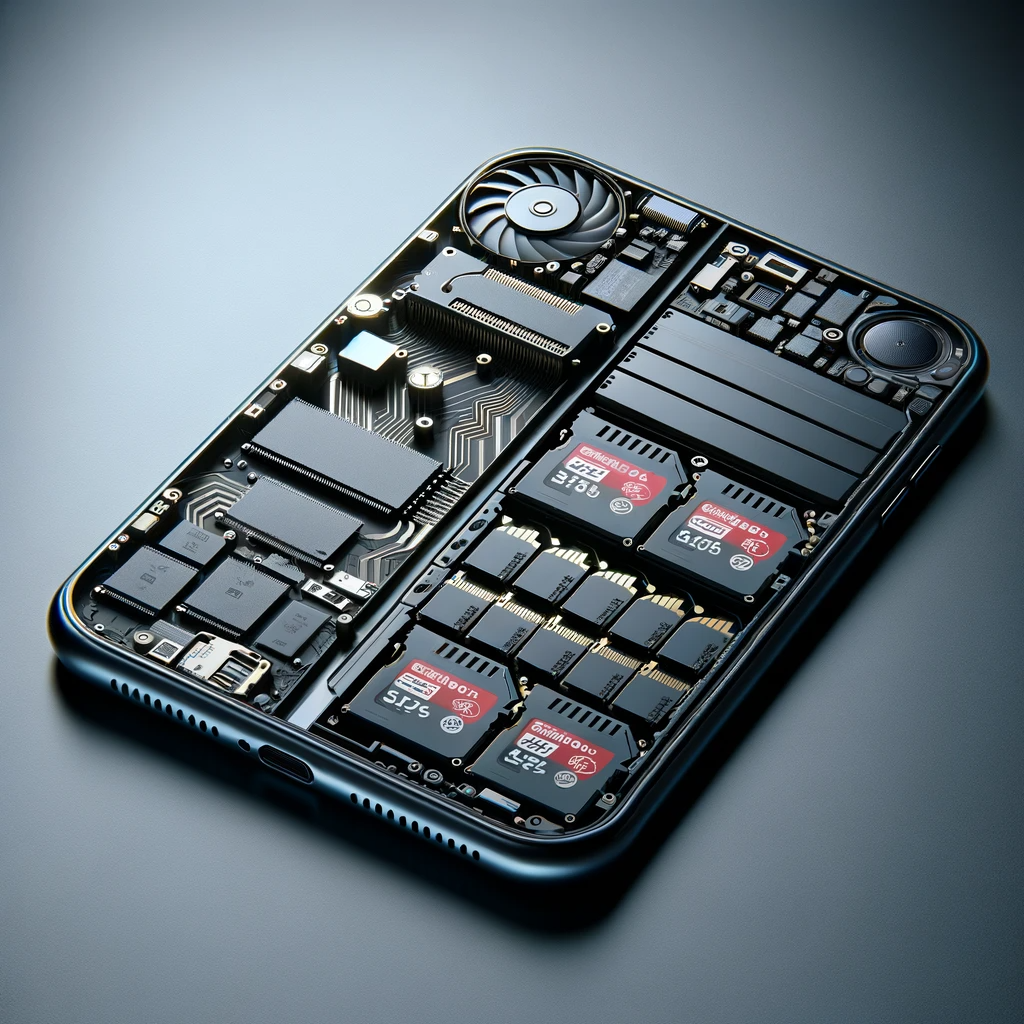Mobile Devices have become an inseparable part of our daily lives, serving as our communication hubs, entertainment centers, and productivity tools. But when it comes to mobile device storage, one important decision often arises: internal or external? In this article, we will unravel the distinctions between internal and external storage options for your mobile device, helping you make an informed choice that best suits your needs.

Internal Storage
What is Internal Storage? Internal storage, often referred to as onboard or built-in storage, is the primary storage solution that comes integrated with your mobile device. It is where the device’s operating system, apps, and user data are stored.
Key Characteristics of Internal Storage:
- Non-removable: Internal storage is fixed within the device and cannot be physically removed or swapped out.
- Speed: Typically, internal storage offers faster read and write speeds compared to external storage options.
- Security: Data stored internally is usually more secure, as it is less susceptible to physical damage or loss.
Benefits of Internal Storage:
- Seamless Integration: Internal storage is designed to work harmoniously with the device’s hardware and software, ensuring optimal performance.
- Reliability: Since it is an integral part of the device, internal storage is less prone to compatibility issues or data corruption.
- Faster App Launch: Apps installed on internal storage tend to load quicker, enhancing user experience.
Considerations for Internal Storage:
- Storage Capacity: The amount of internal storage varies from one device to another, so consider your storage needs before purchasing a mobile device.
- No Expandability: Unlike external storage, you cannot expand internal storage, so choose a device with sufficient storage for your requirements.
External Storage
What is External Storage? External storage refers to storage solutions that can be attached to your mobile device externally, typically through ports like USB, microSD, or lightning connectors. It provides additional storage space for your device.
Key Characteristics of External Storage:
- Removable: External storage is not permanently integrated into the device and can be removed or replaced as needed.
- Expandable: You can increase your device’s storage capacity by using larger external storage options.
- Versatility: External storage can be used across multiple devices, making it a flexible choice.
Benefits of External Storage:
- Extra Space: External storage allows you to store more photos, videos, documents, and apps without worrying about running out of space.
- Backup and Transfer: You can easily back up your mobile device’s data or transfer files between devices using external storage.
- Cost-Effective: Choosing a device with smaller internal storage and supplementing it with external storage can be a cost-effective solution.
Considerations for External Storage:
- Compatibility: Ensure that your mobile device supports the type of external storage you plan to use, such as microSD cards or external hard drives.
- Portability: Depending on the size and type of external storage, it may affect the portability and convenience of your mobile device.
- Data Security: Since external storage can be removed, consider encryption and security measures to protect your data.
Making the Right Choice
The decision between internal and external storage ultimately depends on your specific needs and preferences. Here are some key factors to consider when making your choice:
- Storage Requirements: Assess how much storage space you need based on your usage habits, whether you’re a heavy media consumer or a professional who deals with large files.
- Device Compatibility: Check if your mobile device supports the type of external storage you want to use.
- Performance: Consider your device’s performance requirements and whether you prioritize speed or flexibility.
- Cost: Evaluate the overall cost of the device, factoring in the price difference between various storage options.
- Data Backup: Think about how you plan to back up your data and ensure it is easily accessible.
Conclusion
In the ongoing debate of internal vs. external storage for your mobile device, there is no one-size-fits-all answer. Your choice should align with your storage needs, device compatibility, and personal preferences. Whether you opt for the seamless integration of internal storage or the flexibility of external storage, what matters most is ensuring that your mobile device enhances your digital life and keeps up with your data demands. So, make an informed choice and unlock the full potential of your mobile device today!
